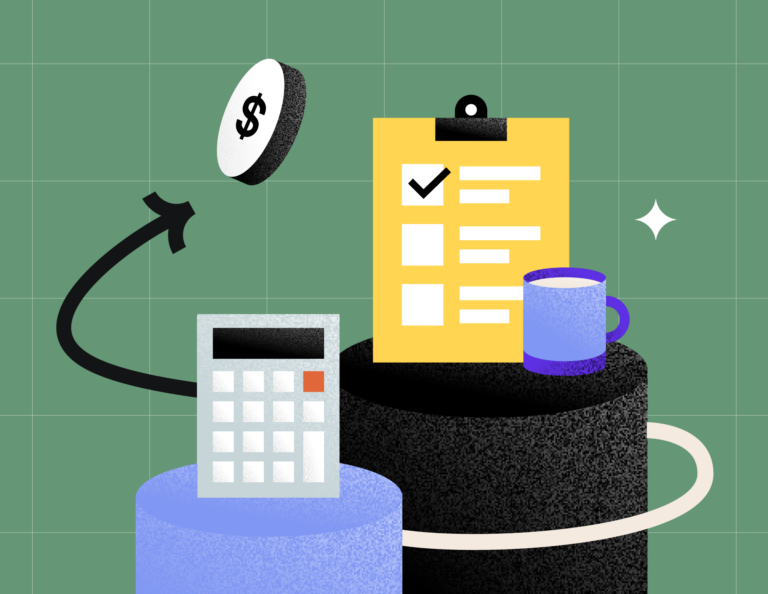Pricing has a massive impact on your appeal to your target customer and your ability to make more sales each cycle. That’s why choosing successful pricing methods is so important for the survival of your business. Below, you’ll find eight foolproof tactics to get you started in your pricing journey.

Pricing products or services can be challenging, especially if it’s your first time deciding how much you should charge for what you do. Your initial instinct could be simply trusting your gut without putting much thought into it.
However, as natural as this approach might feel, it could prevent you from reaching your business’s financial goals and lead you to leave money on the table. Additionally, lacking a pricing strategy could also affect your relationship with existing and potential clients. Prices that are too high (or too low!) might scare them away for good. Balance and accuracy are crucial when it comes to setting the right price for your service. If you go too high, you could miss out on valuable sales opportunities. On the other hand, setting your prices too low, could take a toll on your revenue and skew your reputation.
Luckily, finding a competitive pricing strategy will help you take the guesswork out of the equation and gain confidence to set the right prices and thrive in an increasingly competitive market.
Jump to:
- What is a pricing strategy?
- What to consider when pricing your services
- Elements of a successful pricing strategy
- Top 8 pricing strategy examples that actually work
- Showcase your pricing successfully
What is a pricing strategy?
In a nutshell, a pricing strategy is a plan that helps you set the right prices for your offering, whether we’re talking about a product or a service. Finding the right one that makes sense for your business will encourage your clients to buy while still allowing you to maximize profit.
Setting a price that’s too high or too low could have a negative impact on your business and hinder all your efforts to stay afloat. That’s why you should avoid taking a shot in the dark and follow a proven pricing method that will save you time and prevent you from losing customers and money.
Top 8 pricing strategy examples that actually work
Selecting pricing methods based on intuition will rarely bring you the results you’re looking for on the first try. While pricing services can sometimes be a bit of a trial-and-error process, the right strategy can help you cut down the time you spend and take you straight to succeeding and earning.
Some common pricing strategies that will help your business take off include:
Cost-plus pricing
This pricing model is pretty straightforward. It helps you build a profit margin into the price of your services. To offer cost-plus pricing, all you have to do is determine the cost to produce your services, then add a fixed percentage to that cost.
This strategy can fall short because it’s a business-centered strategy that doesn’t factor in the customer’s mindset.
Luxury pricing
This approach plays with the psychology of pricing and makes your services more aspirational. Customers that use their purchases to build their image won’t mind spending higher than the average consumer for the added sense of exclusivity.
If you decide to use luxury pricing, that means you’re aiming above the average cost in your market. With this method, just be sure to consider if your services align with the prices. Luxury pricing should mean luxury services, so you’ll need to offer premium value.
Competitive pricing
Competitive pricing focuses on the existing market and the prices of products or services that are similar to yours. It prompts you to research the pricing strategies of your primary competitors to come up with the most suitable range to price your offering.
Rate-based pricing
This is an excellent pricing model for consultants, freelancers, and other types of independent service providers. It enables you to set hourly prices and helps guarantee you’re getting paid for your work. You can use a time tracking tool to understand exactly how long it takes to complete each project and use your hourly rate to bill clients.
However, since this pricing method is all about trading time for money, it may cause resistance from the client if your service takes a long time to complete.
Project-based pricing
This pricing strategy operates on a flat rate, which may be the solution to pricing those services that are time-intensive. This strategy is especially beneficial for wedding photographers who offer specific packages, event planners, and similar service-based vendors.
In this model, you make an estimate of the scope of work, the hours you think it will take to complete, the cost, and the value of the service, and set up a price accordingly.
Tiered pricing
This pricing strategy gives your clients a choice, and therefore, a higher sense of control over what they’re paying. Tiered pricing offers different versions of the same service and sets different prices for each.
For example, if you’re a photographer, you may come up with various package options and price them based on complexity. This way, your clients can choose the best one based on their budget and paying capabilities.
Value-based pricing
This approach takes into account your client’s willingness to pay for your services based on what they think it’s worth. It prompts you to set a price based on the consumer mindset and set aside other factors that may influence your prices.
Pro tip: Try combining pricing strategies as needed to come up with a price that makes sense to you. You may also find that it’s best to use one strategy when you’re growing your business, and shift to a different method when you’re focused on scaling up.
Factors to consider when pricing a product
The primary factors to keep in mind when pricing your services are competitor prices and your own revenue goals. However, there’s so much more that comes into play when determining a price that earns profit while still being attractive to existing and potential clients, including:
- Business costs: Think about employee wages, overhead costs, materials, equipment, and all the other operational elements that may require spending money to keep your business running.
- Economic factors: Consider the economic conditions and market demand that may require you to change your prices to stay competitive and plan ahead for fluctuations depending on your industry.
- Positioning: Maintain a balance between the price and quality of your services to build (and maintain) trust among your clients.
- Customer base: Knowing your audience is key to pricing your services effectively. Consider how much customers are willing to pay for your services and whether they value standard, luxury, or lower costs. From there, you can determine where you fall in the market. You might be offering premium services compared to others, which warrants higher prices.
Elements of a successful pricing strategy
A strong pricing strategy has certain characteristics that will determine its success. The most relevant ones are:
- Portraying value: Consumers often associate lower costs with lower quality. That doesn’t mean you must always overprice your services to position them as high-end. It means that the appropriate price could help you portray a more accurate quality assumption and attract more buyers.
- Encouraging sales: You also need to make sure to keep your prices low enough that they’re still attractive. The right price will convince people to choose your offering over your competitors. Prices that are higher than what a potential client is willing to pay can make your revenue plummet due to a loss in clients.
- Building trust: Prices that are too low could make your service seem too good to be true and make your potential clients wary to take the next step.
- Scalability: Your pricing strategy shouldn’t be “set it and forget it”. Instead, you need to continually assess and reevaluate your prices. As a good rule of thumb, you should consider raising your prices by 3–5% each year to account for inflation. You might also want to adjust pricing when you add new services, offerings, and value.
Showcase your pricing successfully
Finding a competitive pricing strategy is vital to increasing your sales and creating more revenue. It can make a huge impact on your overall chances of success, so you must not take it lightly.
Once you’ve come up with a winning pricing plan, HoneyBook can help you create interactive pricing guides that enable your clients to select services, pay online, and book with you. Beyond being online payment software, HoneyBook helps you showcase your prices via customizable templates that align with your brand.
Showcase your pricing and book more clients!
Use HoneyBook to create interactive smart files that streamline your sales and booking process, while managaging much more.
Start free trial


